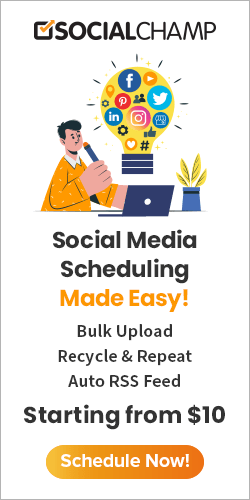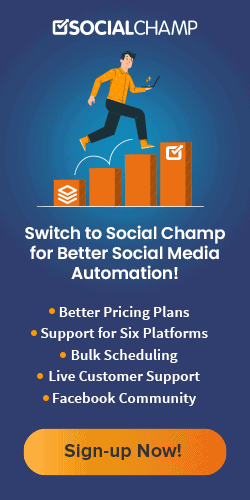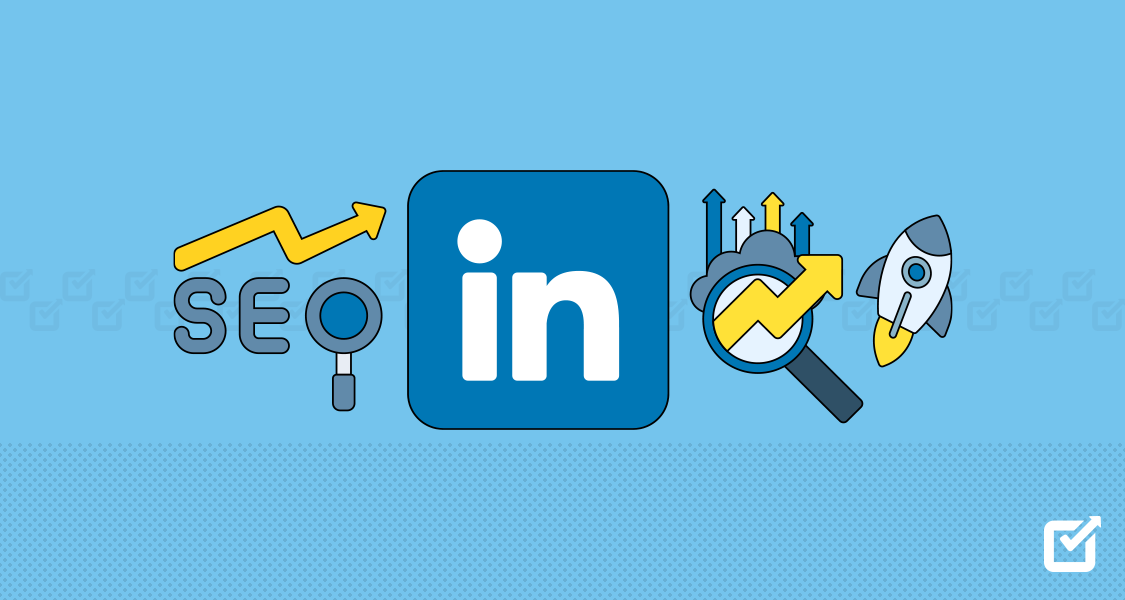If you are one of those people who think Facebook is no longer the “it” platform for marketers. You couldn’t be more wrong.
In fact, according to Data Reportal, Facebook’s ad reach exceeds that of TikTok and Instagram.
So, if you’re looking to grow your business, reach a larger audience, or promote a new product, Facebook ads are one of the most powerful tools you can use.
With more than 2 million active users daily, Facebook offers a broad reach and precise targeting options to help you connect with the right audience.
Now, the question is how to post ads on Facebook.
This guide will walk you through everything you need to know about how to post ads on Facebook, from understanding the different types of ads to best practices for making the most of your advertising budget.
To make managing your ads easier, you can also use a Facebook scheduler to plan and automate your campaigns, ensuring they reach your audience at the best times.

Save Time, Boost Your Reach With Social Champ!
Schedule and manage all your Facebook ads with our easy-to-use scheduler. Try it today and tap into a new audience!
Short Summary
- Facebook’s ad reach surpasses that of TikTok and Instagram, offering extensive visibility for marketers.
- With millions of daily active users, Facebook enables businesses to reach broad and diverse audiences.
- Facebook ads provide advanced targeting options based on demographics, interests, and behaviors.
- The platform offers various ad formats, including images, video, carousel, and lead ads, to support different marketing goals.
- Social Champ’s Facebook scheduler helps streamline ad posting, automate campaigns, and optimize content.
- Best practices for Facebook ads include using high-quality visuals, clear copy, audience segmentation, and retargeting to maximize ad effectiveness.
Why Advertise on Facebook?
With over 3.06 billion monthly active users, Facebook is one of the most popular social media platforms in the world.
It’s not just the size of the audience that makes Facebook a powerful advertising tool but also the targeting options it offers.
Here are some reasons why businesses choose to advertise on Facebook:
- Wide Reach: Facebook provides access to a global audience, allowing businesses to reach users across demographics and interests.
- Targeted Advertising: Facebook’s advanced targeting options enable businesses to tailor ads based on location, age, gender, interests, and behavior.
- Cost-Effective: With a variety of budget options, Facebook ads can be affordable for businesses of all sizes. You can set a daily or lifetime budget based on your goals.
- Ad Formats for Every Goal: Facebook offers various ad formats, such as images, videos, carousels, and lead ads, which can cater to different advertising goals, from brand awareness to conversions.
- Detailed Analytics: Facebook provides in-depth metrics to measure the performance of your ads, allowing you to make data-driven adjustments for better results.
Types of Facebook Ads
Facebook offers several ad formats, each suited to different goals and audiences. Here’s a breakdown of the main types of Facebook ads:
- Image Ads: These are simple ads with a single image and are great for showcasing products or announcements.
- Video Ads: Video ads are ideal for storytelling and engaging viewers with visuals and audio. These can be short clips or longer videos.
- Carousel Ads: Carousel ads allow you to show multiple images or videos in a single ad, which is perfect for displaying a range of products or different features.
- Slideshow Ads: Slideshow ads are like video ads but are made with a series of images that play like a slideshow. These are easier to create and load quickly, making them suitable for users with slower internet connections.
- Collection Ads: Collection ads are designed for mobile users, showcasing a group of products and allowing users to click on individual items to learn more.
- Lead Ads: Lead ads help you gather information from potential customers through forms embedded within the ad. They are excellent for collecting leads without requiring users to leave Facebook.
- Event Ads: If you’re promoting an event, you can use event ads to drive attendance by targeting users interested in similar events or activities.
- Messenger Ads: These ads appear in the Messenger app, allowing businesses to reach users directly in their Messenger inbox.
- Story Ads: Story ads appear in Facebook Stories, a feature where users post photos or videos that disappear after 24 hours. These ads are perfect for creating a quick impact.
Each of these ad formats serves a unique purpose, so choose the one that best fits your advertising goals and content style.
Featured Article: An Ultimate Guide to Facebook Marketing for 2024: From Basics to Inspirations
How to Create a Facebook Ad: Step-by-Step Guide
Creating a Facebook ad is a straightforward process, but it’s essential to follow each step carefully to ensure your ad reaches the right audience and achieves the desired results.
Step 1: Set Up a Facebook Business Page
To run ads on Facebook, you need a Facebook Business Page. If you don’t already have one, create one by going to Facebook.com and selecting “Create a Page.” Follow the prompts to enter your business information.
Step 2: Access Facebook Ads Manager

Once your Business Page is set up, go to Facebook Ads Manager.
This is the platform where you’ll create, manage, and monitor your ads. You can access it by clicking on the “Ads Manager” option from your Facebook menu.
Step 3: Choose Your Marketing Objective

Facebook provides different advertising objectives, such as:
- Awareness: For brand awareness and reach.
- Consideration: For traffic, engagement, app installs, and video views.
- Conversion: For conversions, catalog sales, and store traffic.
Select the objective that best aligns with your campaign goals. For example, if you’re looking to drive website traffic, choose the “Traffic” objective.
Step 4: Define Your Target Audience

Audience targeting is a crucial part of Facebook advertising. Facebook allows you to target users based on various parameters, including:
- Location: Target specific regions or countries.
- Demographics: Filter by age, gender, education, and language.
- Interests: Select interests relevant to your audience, such as fitness, travel, or technology.
- Behaviors: Target users based on behavior, like recent purchases or travel habits.
You can save custom audiences for future use or choose from pre-defined audience options.
Step 5: Set Your Budget and Schedule

Facebook lets you choose between a daily budget and a lifetime budget.
The daily budget is the amount you’re willing to spend each day, while the lifetime budget is the total amount you’re willing to spend for the entire campaign duration.
You can also set a schedule for your ads, deciding whether they run continuously or only at specific times.
Step 6: Choose Your Ad Format

As discussed earlier, there are several ad formats, such as image, video, and carousel ads. Pick the one that best suits your campaign.
For example, if you want to show multiple products, choose a carousel ad to display each item in a single ad.
Step 7: Create Your Ad

In this step, you’ll add images, videos, headlines, and ad copy. Keep your messaging clear and concise. Use high-quality visuals, and ensure that your text is engaging and relevant to your audience.
For example, if you’re creating an ad for a new product, include a clear call-to-action (CTA) like “Shop Now” or “Learn More.”
Step 8: Review and Publish
Once you’ve set everything up, review your ad to ensure all details are correct. Click “Confirm” to submit your ad for review. Facebook will review your ad, which may take up to 24 hours. Once approved, your ad will start running.
How to Post Ads on Facebook Using Social Champ
You can boost posts on Facebook easily with Social Champ! The process is seamless, saving you time and effort. Here’s how you can do it in just a few simple steps:
- Connect Your Facebook Account
Start by connecting your Facebook account to Social Champ. This ensures your page and ad account are ready for boosting posts directly from the platform.
- Create Your Post
Head to the Publish Dashboard in Social Champ and craft your post. Add your text, images, or videos, and ensure the content aligns with your campaign goals. - Scroll Down to “Boost Post”
After finalizing your post, scroll down to the Boost Post section.
Boost Post Option in Social Champ - Choose Your Ad Account and Campaign
Select the appropriate ad account and campaign you want to associate with the boosted post. - Set Your Audience and Reach
Define your target audience based on location, age, interests, and other parameters to ensure your post reaches the right people. - Specify Budget and Duration
Decide on your ad budget and set the duration for how long you want your boosted post to run.
Customizing Boost Post in Social Champ - Schedule and Boost!
Review your settings, schedule the post for the desired time, and hit Boost Post. Your Facebook ad will be set up and ready to go live as scheduled!

Boost Your Reach, Effortlessly!
Take your Facebook posts to the next level with Social Champ. Amplify your best content, reach the right audience, and watch your engagement soar!
Best Practices for Successful Facebook Ads
Facebook ads can be incredibly effective, but creating a successful campaign requires strategy, testing, and ongoing optimization.
To help you get the best results, here are some essential tips to maximize the impact of your Facebook ads:
Define Clear Objectives
Start each campaign with a clear goal in mind. Do you want to increase brand awareness, drive traffic to your website, generate leads, or boost sales?By defining your objective from the outset, you can structure your ad content, budget, and targeting to align with your desired outcome.
Facebook’s Ads Manager also lets you select specific objectives to optimize ad delivery for your chosen goal.
Use High-Quality Visuals
Facebook is a visually driven platform, making eye-catching images and videos essential.High-quality visuals can stop users from scrolling and capture their attention long enough to engage with your message.
Avoid cluttered designs and keep visuals relevant to your brand. Remember, first impressions matter, so invest time in creating or selecting high-quality content.
Write Compelling Copy
Keep your copy clear, concise, and engaging. Facebook users have short attention spans, so use language that quickly communicates your message.Focus on benefits and use a strong call-to-action (CTA) to encourage users to take the next step.
For example, phrases like “Shop Now,” “Learn More,” or “Sign Up Today” provide a clear direction to your audience.
Test Different Ad Formats
Facebook offers a range of ad formats—image, video, carousel, slideshow, collection, and more.Testing different formats can help you determine which resonates most with your audience.
Carousel ads, for example, are great for showcasing multiple products, while video ads are ideal for storytelling and engagement.
Optimize for Mobile
With a large portion of Facebook users browsing on mobile, it’s essential to create ads that look great on smaller screens.Use vertical images and videos where possible, and test the mobile version of your ad to ensure it’s visually appealing, easy to read, and clickable.
Leverage Retargeting
Retargeting lets you reconnect with users who have previously interacted with your brand.It’s a powerful way to re-engage warm leads who may need an extra push to convert.
Set up retargeting ads to reach users who visited your website, engaged with your content, or abandoned their cart.
Use Facebook Pixel
Facebook Pixel is a piece of code you install on your website to track visitor behavior and conversions.By using Pixel, you can gather insights on how users interact with your site, create custom audiences for retargeting, and optimize your ads for actions like purchases or sign-ups.
It’s a valuable tool for making data-driven improvements.
Monitor Performance and Optimize
Regularly review your ad performance to identify what’s working and what isn’t.Key metrics like click-through rate (CTR), cost-per-click (CPC), and conversion rate offer insight into your ad’s effectiveness.
Use these metrics to make data-driven adjustments, such as tweaking your audience targeting, refining your copy, or adjusting your visuals.
Adjust Your Budget Based on Results
As you monitor ad performance, adjust your budget toward the ads that yield the best results.You can scale successful ads by increasing their budget or duplicating them with slight variations to test further.
Conversely, reduce or pause spending on ads that don’t perform well, and consider A/B testing new creative ideas.
Keep Testing and Experimenting
Success with Facebook ads often comes from continuous testing. Run A/B tests with different headlines, images, CTAs, and targeting options to see what resonates best with your audience.Even small tweaks can have a significant impact on performance. Treat each campaign as an opportunity to learn and refine your approach.
Use a Facebook Ad Scheduler
Consistency and timing are crucial.A Facebook scheduler, such as Social Champ, can help you plan and automate your ads to reach your audience when they’re most active.
Social Champ also allows you to monitor performance, adjust your content calendar, and keep your ad campaigns organized—all in one place.
Focus on Audience Segmentation
Segment your audience based on demographics, interests, behaviors, or previous interactions to avoid a “one-size-fits-all” approach.Tailor your ads for each segment to increase relevance and engagement. For instance, you could create specific ads for people who have visited certain product pages on your website, targeting them with reminders or special offers.
Set Up Conversion Tracking for Clear ROI
Tracking conversions, like completed purchases or sign-ups, helps you measure the ROI of your Facebook ads accurately.Conversion tracking provides visibility into what happens after users click on your ads, allowing you to assess the impact of your campaigns beyond basic engagement metrics.
Limit Text on Images
Facebook recommends limiting the amount of text on images, as ads with minimal text tend to perform better.Instead, let the image or video convey the message and use the ad copy space to provide context or additional details.
Stay Updated with Facebook Policies
Facebook has strict ad policies, and non-compliance can result in ad disapproval or account restrictions.Familiarize yourself with Facebook’s advertising policies to avoid issues. Staying compliant will also help maintain your ads’ quality and visibility on the platform.
By applying these best practices, you can create Facebook ads that resonate with your audience, drive engagement, and yield a higher return on your investment.
Conclusion
Facebook advertising offers businesses a powerful way to reach a vast audience and achieve a variety of marketing objectives.
By understanding the different types of Facebook ads, setting up your ads strategically, and following best practices, you can create effective ads that engage your audience and drive results.
Using tools like Social Champ can further streamline your ad management process, allowing you to schedule, optimize, and track your Facebook ads seamlessly.
Now that you know how to post ads on Facebook, including insights on how to post ads on the Facebook marketplace and determined how much to post ads on Facebook, you’re ready to start building your next successful ad campaign.





















